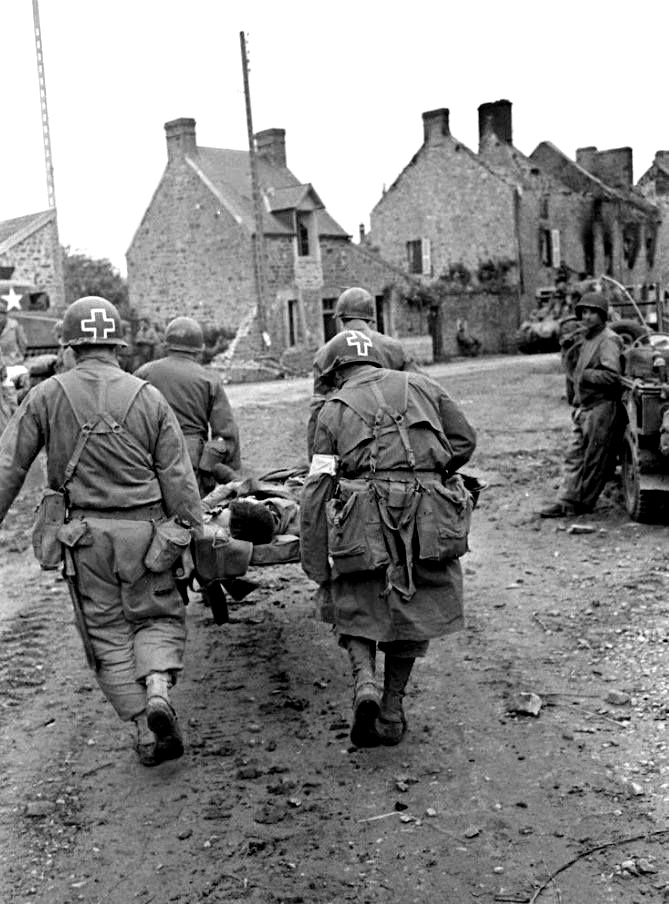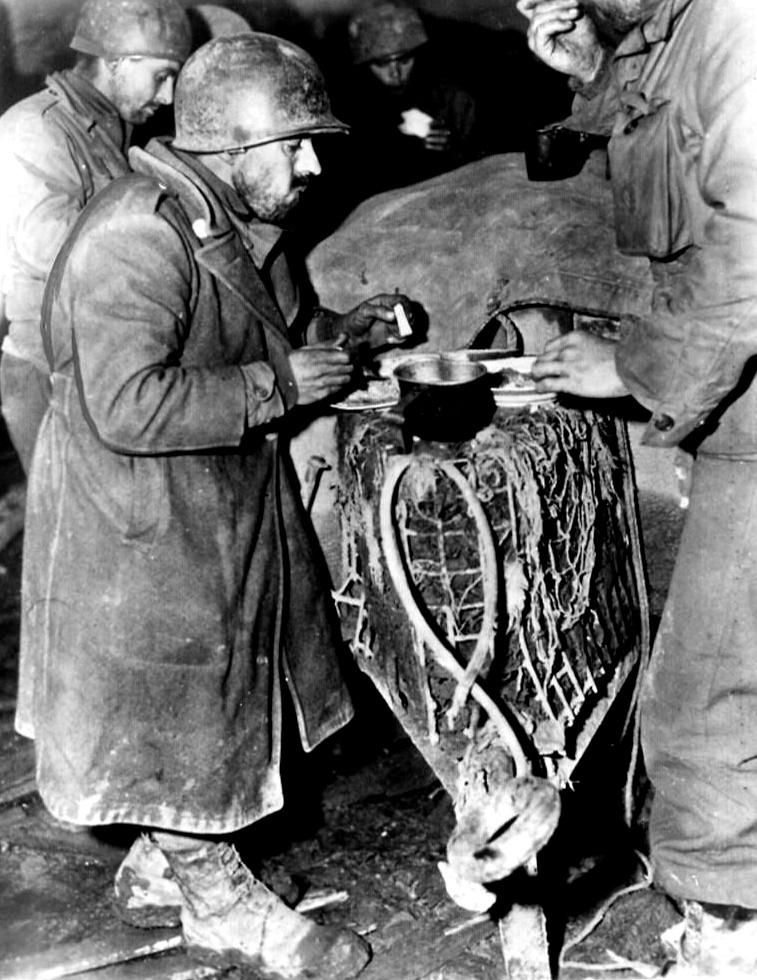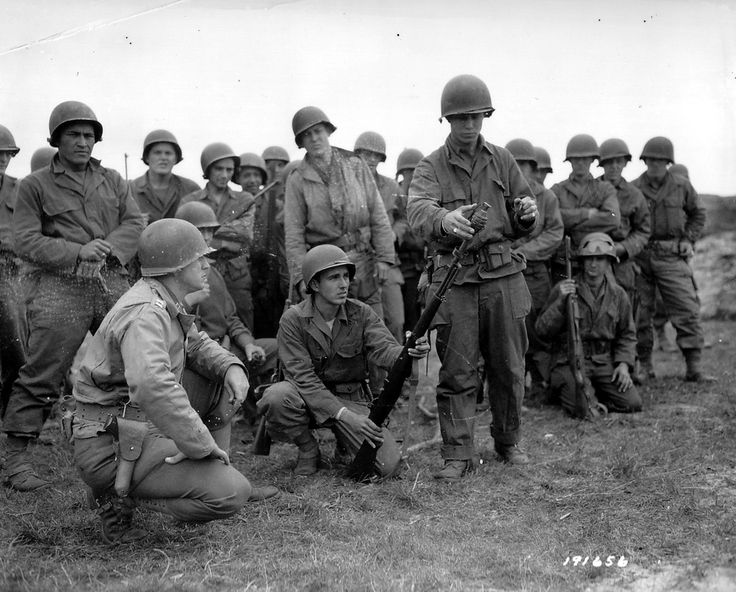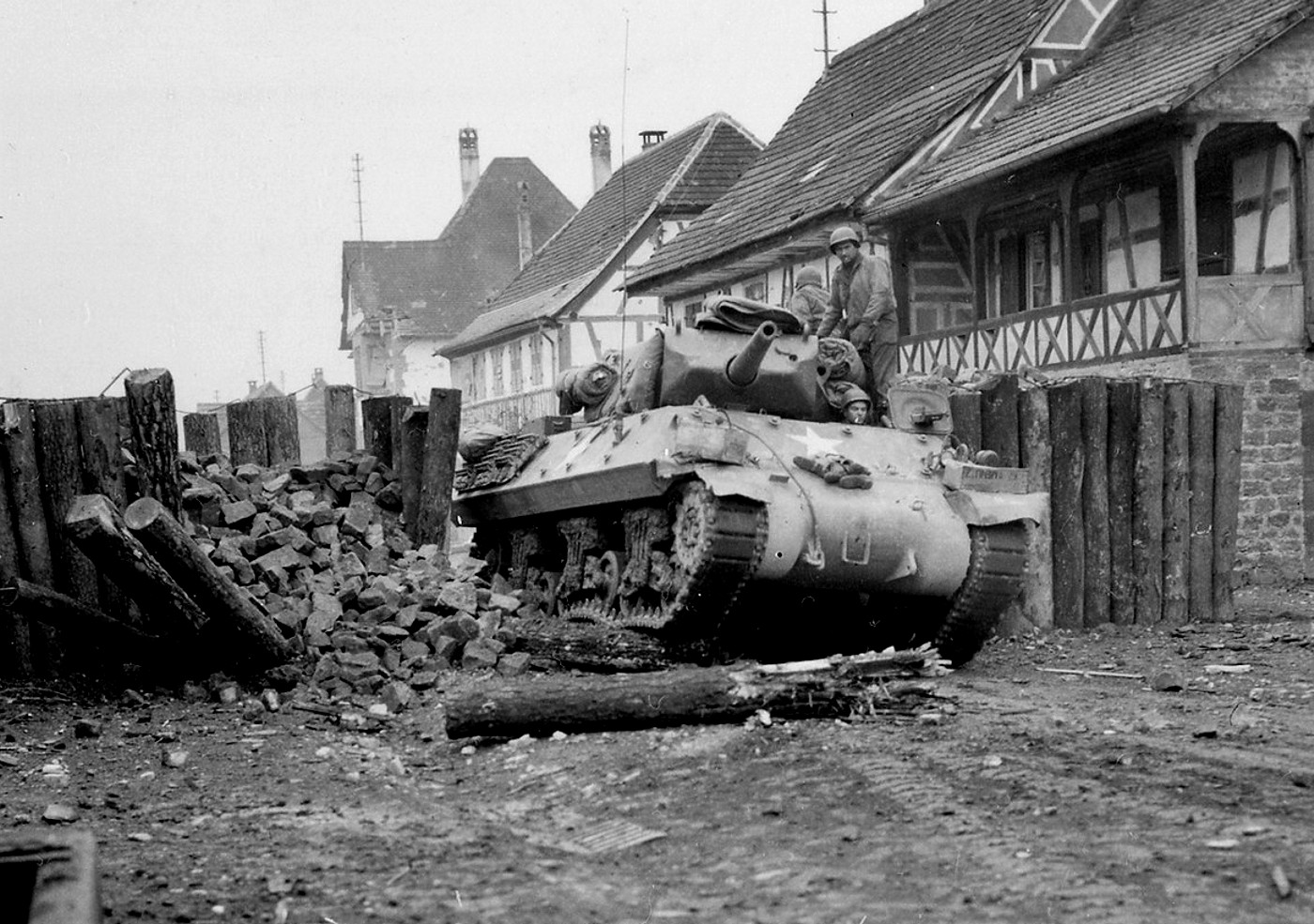Document Source: Order of Battle of the United States Army, World War II, European Theater of Operations. Office of the Theater Historian, Paris, France, December 20, 1945.

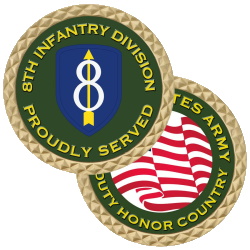 The 8th Infantry Division, was a division of the US Army during WW-1 and WW-2. Initially activated in January 1918, the unit did not see combat during WW-1 and returned to the USA. Activated again on July 1, 1940, as part of the build-up of military forces prior to the US’s entry into World War II. The division saw extensive action in the ETO. Following WW-2, the division was moved to west Germany, where it remained stationed at the Rose Barracks (Bad Kreuznach) until it was inactivated on January 17, 1992.
The 8th Infantry Division, was a division of the US Army during WW-1 and WW-2. Initially activated in January 1918, the unit did not see combat during WW-1 and returned to the USA. Activated again on July 1, 1940, as part of the build-up of military forces prior to the US’s entry into World War II. The division saw extensive action in the ETO. Following WW-2, the division was moved to west Germany, where it remained stationed at the Rose Barracks (Bad Kreuznach) until it was inactivated on January 17, 1992.
The 8th Division was activated during the month of January 1918. Gen William S. Graves, his staff, 5000 men, and 100 officers were transferred to Siberia in August 1918. Gen Eli A. Helmick succeeded Graves in command of the division. The overseas movement of the division to Europe began on October 30. The 8th Field Artillery Brigade, 8th Infantry Regiment, 16th Infantry Brigade headquarters, and the 319th Engineer Regiment were the only divisional units to go to France. The 13th and 62nd Infantry Regiments were at sea when recalled after the Armistice, and the 12th Infantry did not leave its pre-embarkation point at Camp Mills (New York), because it was quarantined for Spanish influenza. The troops who did reach France became the garrison of Brest and assisted in building huge camps for troops about to embark for return to the USA.
The 8th Infantry Regiment became part of the American occupation forces in Germany until August 1919. The 8th Division officially demobilized at Camp Lee (Virginia), in September 1919, but partially reconstituted on March 24, 1923, the outfit was allotted to the Third Corps Area for mobilization purposes, assigned to the III Corps, and sent to Camp Meade (Maryland). The 16th Infantry Brigade (12th and 34th Infantry Regiments), the 1st Battalion, the 16th Field Artillery Regiment, the 15th Ordnance Company, and the 8th Tank Company (Light) were assigned to the division and, as Regular Army Active Units, formed the force from which the remainder of the division would be reactivated in the event of war. The commanding general of the brigade was considered the division commander for planning purposes. The 16th Infantry Brigade was stationed at Fort Howard (Maryland), 1922-1928; Fort Hunt (Virginia), 1928-1931; in Washington DC, 1931-1936; and at Fort Meade from 1936 to the activation of the division. The division headquarters was organized on April 1926 in Philadelphia (Pennsylvania), as a Regular Army Inactive Unit using personnel of the Organized Reserve. The active units of the division conducted annual training with the III and XIII Corps and the 79-ID, the 80-ID, and the 99-ID. Summer training camps were usually conducted at Camp Meade.
The 16th Infantry Brigade’s regiments, reinforced by the 3rd Cavalry and the District of Columbia National Guard’s 260th Coast Artillery, were called out on July 28, 1932, to quell potential trouble from the Bonus Army in Washington DC. The 12th Infantry was ordered to clear the US Capitol and the Camps on the Anacostia Flats of the veterans that afternoon. The division was also provisionally organized in 1939 for the First Army Maneuvers at Manassas (Virginia), with the 16th Brigade reinforced by the 66th Infantry (Light Tanks). In preparation for becoming a triangular division, the 8th Division was reactivated on July 1, 1940, at Fort Jackson (South Carolina), without its Reserve units and assigned to the I Corps. Renamed the 8th Infantry Division, the unit trained at Camp Laguna (California) and was sent overseas (Ireland) on December 5, 1943. After training in Ireland, the 8-ID landed on Utah Beach (Normandy), on July 4, 1944, and entered combat on July 7.
Killed in Action, 2239
Wounded in Action, 10.370
Missing in Action, 514
Captured, 335
Battle Casualties, 13.458
Non-Battle Casualties, 7598
Total Casualties, 21.056
Commanding Generals
Maj Gen William C. McMahon, Dec 15, 1943
Brig Gen Donald A. Stroh, Jul 12, 1944
Maj Gen Donald A. Stroh, Aug 30, 1944
Brig Gen W. G. Weaver, Nov 28, 1944
Brig Gen James A. Pickering (Acting), Jan 8, 1945
Brig Gen W. G. Weaver, Jan 14, 1945
Maj Gen W. G. Weaver, Feb 4, 1945
Brig Gen Bryant E. Moore, Feb 25, 1945
Assistant Division Commander
Brig Gen Nelson M. Walker, February 15 1944
Col Cyrus H. Searcy, July 12 1944
Col Charles D. W. Canham, July 26 1944
Brig Gen Charles D. W. Canham, September 1 1944
Artillery Commander
Brig Gen James A. Pickering, December 15 1943
Chiefs of Staff
Col Thomas J. Cross, Feb 15, 1944
Lt Col Thomas B. Whitted Jr, Nov 27, 1944
Col Thomas B. Whitted Jr, Feb 9, 1945
Lt Col Joseph K. Gibson, Mar 22, 1945
Assistants CoS G-1
Maj Edwin W. Grenelle, Feb 1, 1944
Lt Col Edwin W. Grenelle, Mar 31, 1944
Assistants CoS G-2
Lt Col Joseph K. Gibson, Dec 15, 1943
Maj Laban G. Lively, Mar 22, 1945
Lt Col Laban G. Lively, May 1, 1945
Assistants CoS G-3
Lt Col Thomas H. Beck, Feb 16, 1944
Lt Col Fielder P. Greer, Apr 1, 1945
Assistants CoS G-4
Lt Col Thomas B. Whitted Jr, Feb 15, 1944
Maj Jacob Shacter, Nov 27, 1944
Lt Col Jacob Shacter, Dec 20, 1944
Assistants CoS G-5
Maj Richard G. Croft, May 13, 1944
Lt Col Richard G. Croft, Nov 6, 1944
Maj Lester A. Ahroon, Apr 16, 1945.
Adjutants General
Lt Col James D. C. Breckinridge, Feb 15, 1944
Maj Marion Cromartie, Feb 3, 1945
COs – 13-IR
Col Robert A. Griffin, Jul 8, 1944
Lt Col Earle L. Lerette, Nov 25, 1944
Col Numa A. Watson, Dec 1, 1944
COs – 28-IR
Col Lester A. Webb, Jul 8, 1944
Lt Col Henry B. Kunzig (Acting), Jul 9, 1944
Col Kenneth E. Anderson, Jul 14, 1944
Col Merrith E. Olmstead, Aug 31, 1944
Col Thomas H. Beck, Mar 4, 1945
COs – 121-IR
Col Albert H. Peyton, Jul 8, 1944
Col John R. Jeter, Jul 9, 1944
Col T. J. Cross, Nov 25, 1944
Lt Col Earl L. Lerette, Mar 22, 1945
Statistics
Activated Jul 1, 1940
Arrived ETO Dec 15, 1943
Arrived Continent (D+28) Jul 4, 1944
Entered Combat
– (First Elements) Jul 4, 1944
– (Entire Division) Jul 8, 1944
Days in Combat 266.
Campaigns
Normandy
Northern France
Rhineland
Central Europe
Awards
Distinguished Service Cross, 32
Legion of Merit, 11
Silver Star, 709
Soldiers Medal, 30
Bronze Star, 2287
Air Medal, 106
PWs Taken, 316.187











